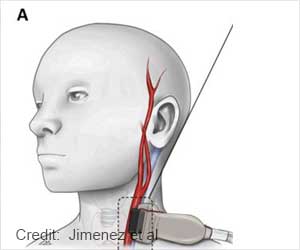New 2009 Guidelines for the diagnosis and treatment of pulmonary hypertension are made public, says report.
New 2009 Guidelines for the diagnosis and treatment of pulmonary hypertension are made public, says report.
The Guidelines have been jointly produced by a Task Force of the European Society of Cardiology (ESC) and the European Respiratory Society (ERS); the Task Force also included experts from the International Society of Heart and Lung Transplantation (ISHLT).The new 2009 Guidelines provide a new clinical classification of pulmonary hypertension which identifies six different clinical groups. However, whatever the underlying causative mechanism, pulmonary hypertension is characterized by a poor prognosis. Indeed, says Professor Nazzareno Galie, from the Institute of Cardiology at the University of Bologna, Italy, and Chairperson of the Guidelines Task Force: "It is the multidisciplinary nature of pulmonary hypertension and its severity which have made the new guidelines necessary."
Pulmonary hypertension (the increase of blood pressure within the lung circulation) is a condition which may complicate the majority of heart and of lung diseases, or may develop without a clear initiating cause. The new 2009 Guidelines identify six different clinical groups.
The two most common groups are found in patients with pulmonary hypertension resulting from left heart disease (group 2) or lung diseases (group 3). In fact, as many 60% of patients with severe left heart failure and 50% of those with advanced chronic obstructive lung disease will develop pulmonary hypertension. In contrast, clinical group 1 - defined as "pulmonary arterial hypertension" - identifies a group of relatively young patients (average age 50 years) without a clear cause for its development of. However, despite its low prevalence (up to 50 cases per million population), this group has the most severe form of pulmonary hypertension(2.5 years average survival without treatment).
There are several new findings which differentiate the 2009 Guidelines from earlier ones: Details for all six clinical groups of pulmonary hypertension are described, including treatment strategies. This is new and should avoid some of the confusion seen in the past over specific drug therapy. A unique diagnostic approach is proposed for recognising affected patients as soon as possible and clearly identifying the different clinical groups. Emphasis is given to the identification and risk stratification of patients with the more severe form of the disease, ie, those with pulmonary arterial hypertension (group 1). Pulmonary arterial hypertension - group 1 - is the only clinical group provided with specific drug therapy and an evidence-based treatment algorithm. The greatest progress in treatment has been made in this group, with eight drugs from three different pharmacological classes approved by regulatory agencies (a table with updated approvals in different countries is provided). A recent meta-analysis of 23 randomized controlled trials with these compounds has shown a 43% reduction in mortality in pulmonary arterial hypertension patients. Definitions of patient status and treatment goals are provided, with indications for follow-up strategy. This will help physicians tailor the most appropriate level of medical treatment for each individual patient. The indication for interventional procedures - including lung and heart-lung transplantation - are discussed. The particular features of the different types of pulmonary arterial hypertension patients, including pediatric patients, are highlighted. The minimal requirements of referral/specialized centers for pulmonary hypertension are discussed, underlining a need for professional clinical competence in the management of such demanding patients. Overall 127 graded recommendations have been provided
Says Professor Galie: "It is our belief that the new Guidelines on the diagnosis and treatment of pulmonary hypertension will provide the medical community with updated theoretical and practical information for the management of patients with this severe condition. And because multiple medical disciplines are involved, the joint Task Force of the ESC and ERS (with the collaboration of members of the ISHLT) has developed a multidisciplinary document which can be applied in the heterogeneous medical structures dedicated to the care of patients with pulmonary hypertension."
Advertisement
ARU










